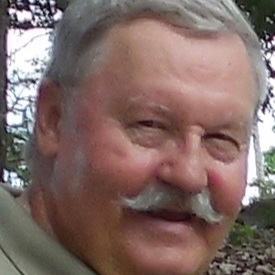
Five years after Hurricane Katrina, I gave a talk with this title at a meeting in New Orleans hosted by FedEx and the Salvation Army. I recently stumbled across my slides (no snide remarks about my less than sterling filing system – please!). I had always meant to write something up along these lines but never quite got around to it. What I learned those few days in NOLA has great relevance to recovery from Harvey, Irma and Maria.
Pain is inevitable, suffering is optional. I have come to fervently believe in these words from Ernie Broussard of Cameron Parish. When the winds come, the rains fall and the flood waters rise, lives will be disrupted. Some buildings will be damaged. Some roads will be washed out. We will feel pain. But if we have hardened what we can, if each of us has prepared ourselves for the inevitable and if we have worked with those around us to build those essential mutual support networks, then we can avoid true suffering.
Some of you will point to Puerto Rico as a counter-example. But little there was hardened; a corrupt and bankrupt utility and government saw to that. Many (most?) local governments were not prepared; some community leaders didn’t bother to work with hard-pressed federal officials or other local governments, opting instead for partisan finger pointing.
You’re not recovering, you’re preparing for whatever’s next. As we should have learned from Katrina and New Orleans, what you rebuild today will be tested tomorrow; sometimes in ways you don’t expect. Three years after Katrina, NOLA was hit by Gustav, Ike and … the Great Recession. Two years after that – the BP oil spill. Some disasters the same; but some which attack communities in very different ways (Remember – disasters have direction). Gustav and Ike tested the resilience of the built environment; the Great Recession, the resilience of the area’s economy; as did the BP oil spill.
We can’t let our memories of the past dictate our ability to protect our future; clearly, New Orleans’ Old Normal didn’t withstand Nature’s wrath. We have to build back better – and that includes all the components of our communities, not just the built environment.
If you don’t control your recovery, who will? One of the most important lessons I learned from Katrina (reinforced by Hurricane Sandy) was that a neighborhood or a community truly begins to recover only when it takes control of its own future. After Katrina, most of the Broadmoor neighborhood had been designated as an area to be turned into a park, i.e., it had been written off for real recovery. FEMA, the city government and many academics all agreed; but Broadmoor didn’t. The neighborhood pulled together in a way it hadn’t for decades – a local church, neighborhood leaders, rich and poor side by side – and fought the city’s plans to bulldoze much of it under. The neighborhood has incrementally rebuilt itself until today it has become the Future all would have wished for but few could have foreseen before the flood waters came.
There are rhythms to recovery. Just as “Disasters have Direction,” the recovery of each part of the community from disaster has its own rhythms. In many communities, recovery of utility services is relatively rapid after a disaster. Economic recovery usually comes next, but may be months or even years later. Recovery of neighborhoods may take even longer; NOLA’s Lower Ninth Ward may never fully recover. And “full stops” may be a part of these rhythms (e.g., the lengthy delay even starting on the rebuilding of the World Trade Center after 9/11).
Celebration of small successes is essential for greater ones. Several years ago, I wrote
“Too often as we contemplate the pain and suffering of disaster, we forget that we rebuild our lives by laying one brick on another, that recovery is the culmination of many small steps, and not the result of a giant leap. We, as humans, cannot and will not make continuous progress and we will get discouraged by seeing how far we still have to go. But that’s one of the wonderful things about a celebration – it helps us look back and see how far we’ve come. It provides a validation that all of our effort has brought us out of the abyss and nearer the summit we’re striving to reach. Thus, celebrating small successes enables us to achieve great things.”
Never underestimate the Power of a Party!
Afterword
Recovery occurs network by network, district by district, not just building by building…It is about reconstructing myriad social relationships embedded in schools, workplaces, childcare arrangements, shops, places of worship, and places of play and recreation. — Vale and Campanella
Editor’s note: This blog was originally published by the Community & Regional Resilience Institute (CARRI) and has been reposted with permission from the author. To learn more about CARRI, visit www.resilientus.org
